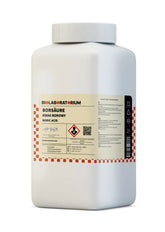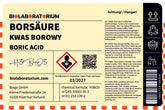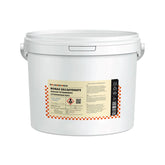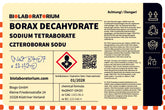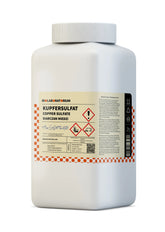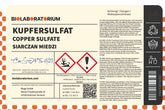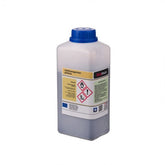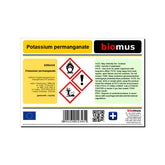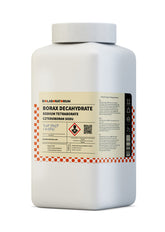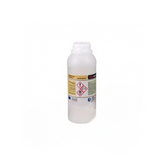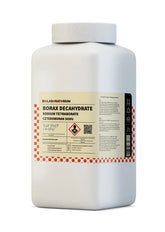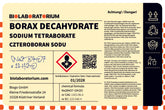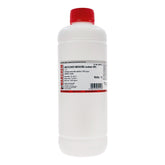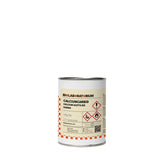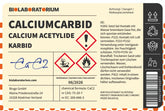The versatile applications of glucosamine in industry
Glucosamine is a naturally occurring amino sugar molecule that has gained increasing attention in industry in recent years. This versatile molecule offers a variety of applications far beyond the well-known use in dietary supplements. In this blog post, we want to take a closer look at how glucosamine can be used in industrial processes and what advantages it offers.
Glucosamine: More than just a dietary supplement
Glucosamine is a naturally occurring amino sugar molecule found in the cartilage, tendons, and bones of the human body. Due to its role in maintaining and regenerating joint cartilage, glucosamine is often used in dietary supplements to support joint health.
But glucosamine has much more to offer than just this one application. In recent years, researchers and industry partners have discovered and explored the diverse properties of the molecule. Glucosamine proves to be an extremely versatile raw material that can be used in numerous industrial processes.
Glucosamine in cleaning agent manufacturing
One of the main application areas of glucosamine in industry is the production of cleaning agents. Due to its excellent surface activity and emulsifying properties, glucosamine is ideally suited as a surfactant in cleaning and washing agents.
Glucosamine can be used as an environmentally friendly alternative to synthetic surfactants like sodium lauryl sulfate. It is biodegradable, skin-friendly, and free from harmful substances. At the same time, it offers high cleaning performance and foam formation, making it an attractive raw material for the cleaning agent industry.
Furthermore, glucosamine can also act as a binder in cleaning agents, thereby improving adhesion on surfaces. This increases the efficiency and effectiveness of cleaning products.
Advantages of glucosamine in cleaning agents:
- Environmentally friendly and biodegradable
- Skin-friendly and free from harmful substances
- High cleaning performance and foam formation
- Improved adhesion on surfaces through binder function
Glucosamine in cosmetic manufacturing
Besides the cleaning agent industry, glucosamine also finds diverse applications in the cosmetics sector. Its moisturizing, skin-soothing, and antioxidant properties make it a valuable raw material for skincare products.
In creams, lotions, and serums, glucosamine can strengthen the skin barrier, reduce wrinkles, and improve the skin's moisture content. Additionally, it has anti-inflammatory effects, making it an ideal ingredient for sensitive or irritated skin.
Glucosamine is also used in hair care products. Here it can improve hair structure, provide moisture, and increase shine. Especially for dry or damaged hair, glucosamine offers valuable care properties.
Benefits of glucosamine in cosmetic products:
- Moisturizing and soothing to the skin
- Antioxidant effect and strengthening of the skin barrier
- Reduction of wrinkles and improvement of hair care
- Anti-inflammatory properties for sensitive skin
Glucosamine in technical applications
In addition to its uses in cleaning and cosmetic products, glucosamine is also used in technical applications. Due to its chemical structure and properties, it can be used as a binder, emulsifier, or humectant in various industrial processes.
In the paper and textile industry, glucosamine can serve as a binder for dyes and pigments, for example. It improves adhesion and color intensity on materials. Glucosamine can also function as a binder in adhesives and varnishes.
Furthermore, glucosamine is used as an emulsifier in paints, inks, and coatings. It contributes to the stability of emulsions and prevents the flocculation of pigments or fillers.
Last but not least, glucosamine can also be used as a humectant to influence the drying speed and flexibility of materials. This is of particular interest in the wood and furniture industry.
Examples of glucosamine applications in technical processes:
- Binder for dyes and pigments in the paper and textile industry
- Emulsifier in paints, inks, and coatings
- Humectant to influence drying speed and flexibility
Conclusion: Glucosamine - a versatile industrial raw material
In recent years, glucosamine has proven to be an extremely versatile and valuable industrial raw material. Far beyond its well-known use in dietary supplements, the molecule offers numerous applications in the cleaning, cosmetics, and technical industries.
As an environmentally friendly, skin-compatible, and functional substance, glucosamine can replace or complement synthetic raw materials in many products. Its properties as a surfactant, binder, emulsifier, and humectant make it an attractive raw material for industry.
The benefits of glucosamine range from improved cleaning performance to moisturizing skin care to more stable technical formulations. Given this versatility, it is not surprising that glucosamine is gaining increasing importance in industrial production.
Companies looking for sustainable, innovative, and functional raw materials should therefore take a closer look at glucosamine. The potential of this molecule is by far not yet exhausted.

